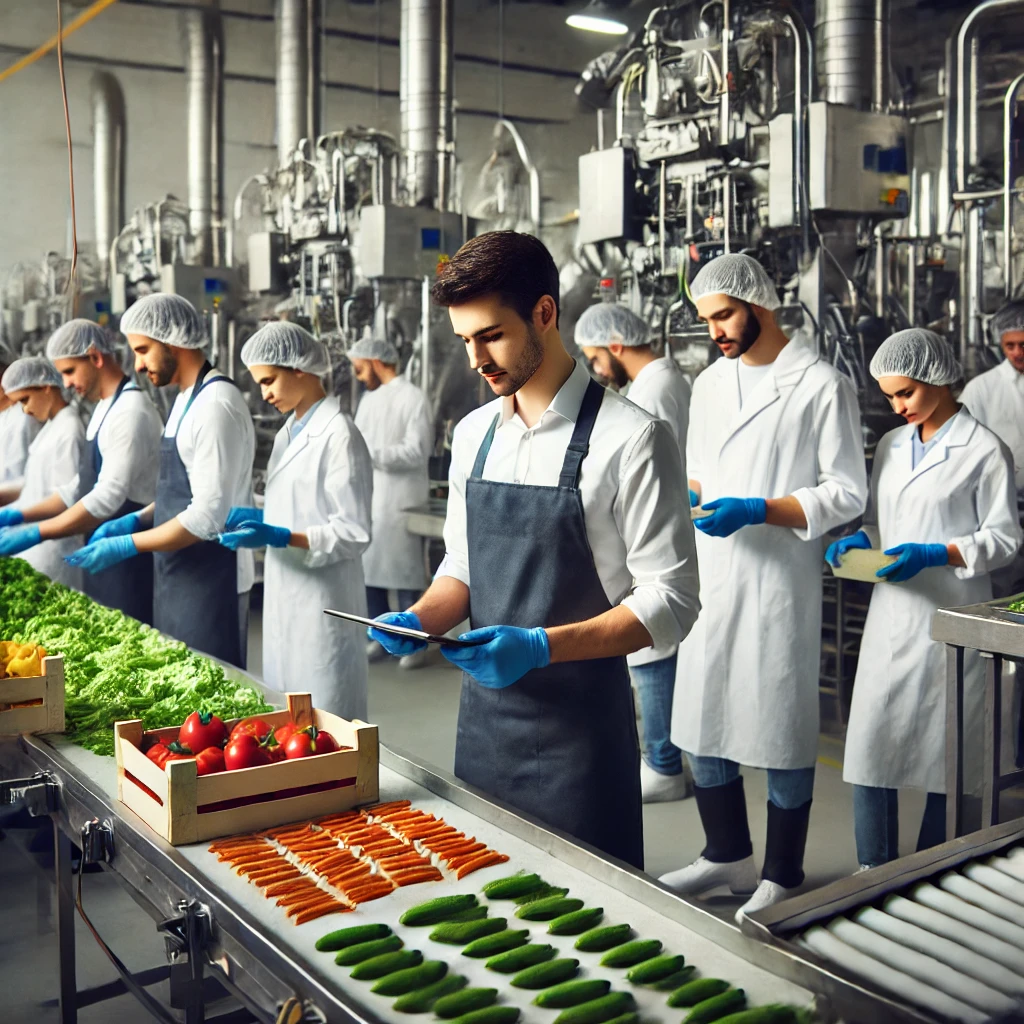Employment and training in the agroindustry: 5 key challenges and opportunities
The agroindustry is a cornerstone of the global economy, providing employment for millions and ensuring food security worldwide. Yet, despite its significance, the sector faces pressing challenges in attracting, training, and retaining talent. As innovation, sustainability, and digitalisation transform the industry, companies must rethink their approach to workforce development.
This article is based on insights from a panel discussion held during the latest SIAL Talks in October 2024, where industry leaders addressed the pressing challenges and opportunities in agroindustry employment. For those interested in exploring the full discussion, visit: SIAL Talks 2024.
The Agroindustry: A key economic player with workforce challenges
The food industry is one of the largest economic sectors, particularly in France, where it is the country’s leading industrial sector. With over 510,000 employees, the industry is predominantly made up of small and medium-sized enterprises (SMEs), which account for approximately 98% of total employment. However, despite the sector’s importance, its public image remains a challenge. Studies indicate that only 46% of French citizens have a positive perception of agroindustry businesses, revealing a gap between reality and perception.
This image problem stems from several factors:
- Closed-off facilities: Due to strict hygiene and safety regulations, many food production sites are not easily accessible to the public.
- Perceived working conditions: The industry is often associated with cold storage environments, noisy machinery, and physically demanding tasks.
- Lack of visibility: Many people are unaware of the wide range of careers available within the agroindustry, including roles in technology, marketing, logistics, and sustainability.
Bridging the Talent Gap: Innovation in Recruitment and Training
As the competition for talent intensifies across industries, agroindustry companies must adopt new strategies to attract employees and bridge the skills gap. Loïc Henaff (CEO HENAFF, a key player in the sector, exemplifies innovative recruitment approaches:
- Open Days and Virtual Tours: Many companies are leveraging factory visits—both physical and virtual—to demystify the industry and showcase career opportunities.
- Job Fairs and Market-Based Recruitment: Henaff has successfully conducted recruitment speed-dating sessions in outdoor markets, reaching potential employees who may not have otherwise considered a career in agroindustry.
- Structured Onboarding & Training: At Hénaff, 98% of new employees undergo a structured training programme, ensuring a smooth integration into the workforce.
In addition, companies are investing in digital tools such as augmented reality (AR) and virtual reality (VR) training, making onboarding more engaging and accessible to younger generations.
Demographic Challenges and Workforce Retention
Beyond recruitment, the industry must also tackle the issue of workforce retention. The demographic outlook for the next 25 years predicts a declining working-age population, making it crucial to retain experienced professionals while integrating new talent.
- Adapting Roles for Older Employees: With 20–30% of agroindustry employees retiring by 2030, businesses must redesign roles to accommodate aging workers. This includes flexible work arrangements and skill-transfer initiatives.
- Career Development Opportunities: Companies must position themselves as long-term career destinations by offering upskilling programmes, mentorship, and internal mobility.
- Employer Branding and Engagement: A strong corporate culture and purpose-driven work environment are key to retaining talent and attracting young professionals who prioritise meaningful careers.
A European Perspective: Innovation, Skills, and Mobility
The challenges faced by the agroindustry in France are not unique. Across Europe, 99% of agroindustry businesses are SMEs, many of which lack an innovation culture and struggle to implement cutting-edge recruitment and training practices.
EIT Food, a European organisation focused on transforming the food system, highlights the importance of open innovation and collaboration between corporations, startups, and research institutions. Key trends include:
- Developing Sustainable Food Systems: The shift toward sustainable agriculture and plant-based innovation is driving the need for new expertise in food science, technology, and environmental sustainability.
- AI and Digital Transformation: Artificial intelligence is reshaping supply chain management, food safety, and production automation, creating demand for digital-savvy professionals.
- Pan-European Workforce Mobility: Encouraging Erasmus-style mobility programmes and cross-border training initiatives could help businesses tap into a broader talent pool.
Future-Proofing the Agroindustry Workforce
To remain competitive and sustainable, the agroindustry must adopt a long-term workforce strategy that prioritises investment in human capital. Businesses should:
- Proactively invest in skills forecasting to anticipate future talent needs and adjust training programmes accordingly.
- Foster partnerships with universities and vocational schools to align education with industry requirements.
- Leverage AI and data analytics to enhance recruitment, employee retention, and operational efficiency.
- Promote the industry’s contribution to food security and sustainability, strengthening its appeal to purpose-driven professionals.

Shaping the Future of Agroindustry Employment
The agroindustry is at a pivotal moment. By embracing innovation in recruitment, fostering workforce mobility, and investing in long-term skill development, the sector can attract and retain top talent. Addressing demographic challenges, adapting to AI-driven transformations, and enhancing the industry’s image will be key to securing its future.
As food production continues to evolve, so too must the people behind it. Ensuring a skilled, engaged, and future-ready workforce is not just an economic necessity—it’s a strategic imperative for the agroindustry’s success in the years to come.
